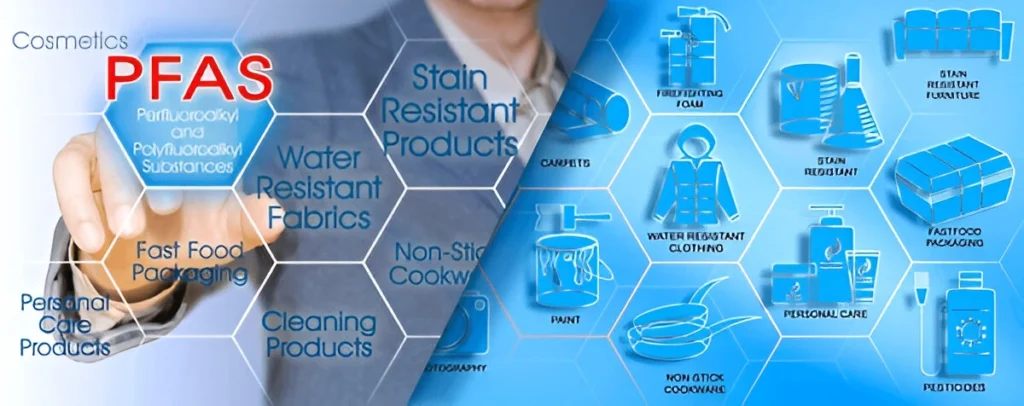Every parent wants the best for their child, from the safest car seat to the gentlest baby lotion. But have you ever wondered what’s lurking in those seemingly harmless baby wipes? One term that’s increasingly making waves is PFAS. Often called “forever chemicals,” PFAS in baby wipes are a growing concern, and for good reason. If you’re curious about what are pfas in baby wipes, why they might be in baby wipes, and how to protect your little one, you’ve landed in the right place.
In this comprehensive guide, we’ll dive deep into the world of PFAS, their potential impact on your baby’s health, and practical tips to avoid them. Let’s get started!
What Are PFAS in Baby Wipes?
The Basics of PFAS
PFAS, or per- and polyfluoroalkyl substances, are synthetic chemicals used in a variety of products to provide water, grease, and stain resistance. These chemicals are called “forever chemicals” because they do not easily break down in the environment or the human body. PFAS have been linked to a slew of health problems, making their presence in baby wipes a severe concern.
Baby wipes often contain PFAS because manufacturers use these chemicals to make the wipes durable, moisture-resistant, and effective at cleaning. However, their inclusion in such an everyday product poses hidden risks.
Did you know? Studies have found trace levels of PFAS in numerous household items, including non-stick cookware, waterproof clothing, and—yes—baby wipes!

Why Are PFAS Found in Baby Products?
It’s alarming to think of PFAS in something as seemingly innocent as baby wipes. The chemicals are often present due to the manufacturing process or as a result of contamination during packaging. PFAS enhances the texture and functionality of wipes, making them less likely to tear and better at retaining moisture.
But at what cost? Parents should be vigilant because babies, with their delicate skin and developing systems, are more vulnerable to harmful chemical exposure.
The Risks of PFAS Exposure in Babies
Health Concerns Associated with PFAS
So, why all the fuss about PFAS in baby wipes? Research suggests that PFAS exposure can lead to:
- Hormonal imbalances
- Impaired immune system function
- Developmental delays
- Increased risk of certain cancers
For babies whose skin is highly permeable, the risk is amplified. Even small amounts of PFAS absorbed through contact can accumulate in their tiny bodies over time.
Long-Term Effects of PFAS on Development
Chronic exposure to PFAS during infancy can interfere with growth and cognitive development. Some studies suggest that PFAS may affect brain function, behavior, and even memory. The problem is compounded by the “bioaccumulative” nature of PFAS, meaning they build up in the body with repeated exposure.
Quick Tip: Switching to baby wipes without PFAS can dramatically reduce your child’s exposure to these chemicals.

How to Spot PFAS in Baby Wipes?
Label Reading 101
Identifying PFAS in baby wipes starts with scrutinizing the label. Unfortunately, PFAS often go by many names, making them harder to spot. Terms like “fluorinated compounds” or “PTFE” (polytetrafluoroethylene) might indicate their presence.
Red Flags in Baby Wipe Ingredients
Be wary of vague descriptions like “proprietary blend” or “trade secret” in ingredient lists. These phrases can mask the inclusion of harmful substances. If the label doesn’t explicitly state “PFAS-free,” you might want to think twice before purchasing.
Why Do Manufacturers Use PFAS in Baby Wipes?
PFAS as a Water-Repellent
One of the main reasons manufacturers use PFAS is their incredible ability to repel water and oil. This property helps baby wipes stay moist while maintaining their structure.
Cost-Effectiveness vs. Safety
PFAS are cheap to produce and extend product shelf life. However, the convenience comes at a significant cost to health, especially for vulnerable populations like infants.
Baby Wipes Without PFAS: Do They Exist?
Top Brands Offering PFAS-Free Options
Yes, PFAS-free baby wipes do exist! Brands like WaterWipes and Honest Company produce wipes free from harmful chemicals, focusing on gentle, plant-based ingredients.

Certifications to Look For
Look for certifications such as “ECOCERT,” “USDA Organic,” or “EWG Verified” to ensure your chosen wipes are free from PFAS and other toxins.
Understanding Baby Wipes PFAS Level
The term “baby wipes PFAS level” refers to the amount of PFAS chemicals detected in baby wipes, usually measured in parts per trillion (ppt) or parts per million (ppm). While manufacturers rarely disclose this information, independent tests conducted by consumer advocacy groups have revealed varying PFAS levels in some popular baby wipe brands. Even low levels of PFAS in baby wipes are concerning because these “forever chemicals” don’t break down and can accumulate in the body over time, posing potential health risks to infants.
For babies, exposure to even trace amounts of PFAS can be significant due to their sensitive skin and developing immune systems. Unfortunately, there are no universal regulations governing acceptable PFAS levels in baby wipes, leaving parents to rely on independent certifications or laboratory testing to ensure product safety. To safeguard your baby, always opt for baby wipes without PFAS and stay informed about brands that prioritize transparency and chemical-free production.
FAQ About PFAS in Baby Wipes
- What makes PFAS dangerous?
- PFAS are dangerous because they’re persistent, bioaccumulative, and linked to severe health risks, including cancer and developmental delays.
- Are PFAS always labeled on baby wipes?
- No, PFAS are often hidden under generic terms or omitted altogether.
- What’s the best way to avoid PFAS in baby wipes?
- Opt for certified PFAS-free brands and learn to spot ingredient red flags.
- Can PFAS be washed off baby wipes?
- Unfortunately, no. PFAS are chemical compounds embedded in the wipes’ materials.
- Are there alternatives to commercial baby wipes?
- Yes! DIY baby wipes made with natural ingredients are a safer option.
- How can I verify if a brand is PFAS-free?
- Check for transparency in labeling and seek certifications from trusted organizations.
Conclusion
PFAS in baby wipes poses a hidden yet significant threat to your baby’s health. While convenient, these chemicals carry risks that no parent should ignore. By choosing baby wipes without PFAS and staying informed, you can protect your child and contribute to a safer, healthier future. Always prioritize transparency and safety when selecting baby products—your baby deserves nothing less.
Embrace the knowledge and take action today. Your baby’s health depends on it!
